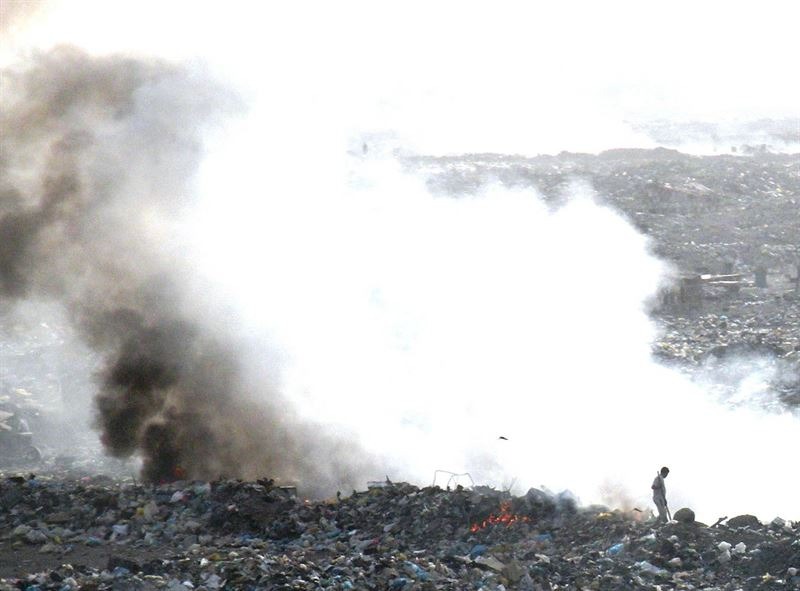New research has revealed the harmful impacts of landfill sites on the environment. According to a new study by the Dutch Institute for Space Research (SRON), landfill sites emit around 28 tonnes of methane per hour. One landfill site in the Argentinian capital of Buenos Aires contributes as much to climate change as 1.5 million cars.
Using satellite data, the study analysed the emissions of greenhouse gases being emitted by landfill sites across the world. The researchers concluded that landfill sites were an often overlooked source of greenhouse gas emissions in the fight against climate change.
Data reveals that emissions from these sites are much higher than previously thought. In the Indian metropolises of Delhi and Mumbai, as well as in the Pakistani city of Lahore, landfill sites collectively emitted more than 19 tonnes of methane per hour into the atmosphere, roughly equivalent to the climate impact of around one million passenger vehicles. For scale, there are 8 million vehicle registrations in the Netherlands.
Methane, created when organic material is broken down, is credited as the main source of the heightened emissions. The IPCC blames methane for a quarter of global temperature increases, but often does not receive the same attention as greenhouse gas carbon dioxide.
“Reducing methane emissions is a priority for curbing climate change. With global methane concentration increasing at record pace, identifying sources with high potential for mitigation is a critical first step,” lead researcher Joannes Maasakkers writes.
Feasible reductions
The survey suggests that the emission city-level methane emissions are 1.6-2.8 times larger than previously reported, with landfills contributing between 5-47% of those emissions. Fortunately, tackling these emissions should be relatively straightforward.
“These emissions could be reduced…using technically feasible reduction strategies including active landfill covers, energy recovery, and omitting organic waste from landfills,” Maasakkers said. If these measures are taken, the researchers believe, by 2050, emissions could be reduced by 80%, compared to taking no action.
Related News
- Climatologists fear Europe is heading towards a future 50 °C summer
- Climate: Antarctic sea ice reaches its lowest level for July
In 2020, global human-caused methane emissions from municipal solid waste landfills had the same warming impact as approximately 4 billion metric tonnes of CO2 over a 20 year period, and accounts roughly 20% of the total emissions caused by humans, according to the Global Methane Initiative.
The level of methane in the atmosphere is now 2.5 times higher than before the industrial revolution.
Developed countries still biggest polluters
However, the United Nations Framework Convention on Climate Change (UNFCCC) has recognised that developed countries remain historically the largest contributors to the problem, enshrined in the convention under the banner of 'common but differentiated responsibilities'.
In this context, the convention also states "the developed country Parties should take the lead in combating climate change and the adverse effects thereof. "
The Environmental Protection Agency (EPA) says that U.S landfill accounted for 14.5% of methane from human activities in 2020, or roughly the equivalent of 20 million cars per year.
The Global Methane Pledge, launched last year ahead of the Glasgow Climate Conference, aims to reduce methane emissions by 30% by 2030, when compared to 2020. Reducing methane emissions from landfill may prove to be an important tool in reaching these ambitious goals.

